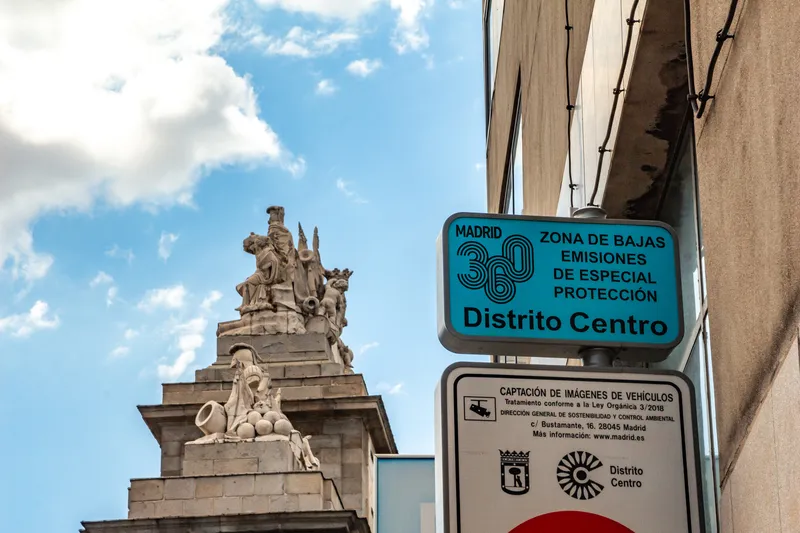Carnegie Mellon College of Engineering researchers in the US have concluded that the public could derive economic and social benefits today if safety-oriented, partially automated vehicle technologies were deployed in all cars. The researchers examined forward collision warning, lane departure warning and blind spot monitoring systems. These technologies can include partially autonomous braking or controls to help vehicles avoid crashes.
Chris T. Hendrickson, director of the Carnegie Mellon Traffic21 In
July 19, 2016
Read time: 3 mins
Carnegie Mellon College of Engineering researchers in the US have concluded that the public could derive economic and social benefits today if safety-oriented, partially automated vehicle technologies were deployed in all cars. The researchers examined forward collision warning, lane departure warning and blind spot monitoring systems. These technologies can include partially autonomous braking or controls to help vehicles avoid crashes.
Chris T. Hendrickson, director of the Carnegie Mellon Traffic21 Institute and Constantine Samaras, professor of Civil and Environmental Engineering, and Corey Harper, a Ph.D. student at the college, analysed the benefits and costs of deploying crash-avoidance technologies in the US light-duty vehicle fleet. These technologies, which are relevant in 24 per cent of all crashes, include blind spot monitoring, lane departure warning and forward collision crash avoidance systems. Collectively, these technologies could prevent or reduce the severity of up 1.3 million crashes a year, including 10,100 fatal wrecks.
To establish if it is economically advantageous to speed up deployment of these technologies, the researchers analysed government and insurance industry data and created two estimates of benefits. To determine the annual costs of crashes, in one scenario, the researchers assumed all relevant crashes were avoided, while in the second scenario they evaluated the impact of the three safety technologies on the quantity and severity of wrecks. Then, taking into account the prices auto manufacturers charged for these technologies in 2015, the researchers deduced how much it would cost to equip each car with the safety features and annualised that amount over the lifetime of the vehicle.
When the team compared the price of equipping cars with safety technology to the expected annual reduction in the costs of crashes, they discovered a net benefit in both scenarios. In the perfect-world scenario in which all relevant crashes are avoided with these technologies, there is an annual benefit of US$202 billion or $861 per car. On the more conservative side, when only observed crash reductions in vehicles equipped with blind spot monitoring, lane departure and forward collision crash avoidance systems are considered, there is still an annual positive net benefit of US$4 billion dollars or US$20 a vehicle. Although US$20 per vehicle is small, the researchers believe that future improvements in technology and lower prices could lead to larger net benefits over time.
"While there is much discussion about driverless vehicles, we have demonstrated that even with partial automation there are financial and safety benefits," says Hendrickson.
Chris T. Hendrickson, director of the Carnegie Mellon Traffic21 Institute and Constantine Samaras, professor of Civil and Environmental Engineering, and Corey Harper, a Ph.D. student at the college, analysed the benefits and costs of deploying crash-avoidance technologies in the US light-duty vehicle fleet. These technologies, which are relevant in 24 per cent of all crashes, include blind spot monitoring, lane departure warning and forward collision crash avoidance systems. Collectively, these technologies could prevent or reduce the severity of up 1.3 million crashes a year, including 10,100 fatal wrecks.
To establish if it is economically advantageous to speed up deployment of these technologies, the researchers analysed government and insurance industry data and created two estimates of benefits. To determine the annual costs of crashes, in one scenario, the researchers assumed all relevant crashes were avoided, while in the second scenario they evaluated the impact of the three safety technologies on the quantity and severity of wrecks. Then, taking into account the prices auto manufacturers charged for these technologies in 2015, the researchers deduced how much it would cost to equip each car with the safety features and annualised that amount over the lifetime of the vehicle.
When the team compared the price of equipping cars with safety technology to the expected annual reduction in the costs of crashes, they discovered a net benefit in both scenarios. In the perfect-world scenario in which all relevant crashes are avoided with these technologies, there is an annual benefit of US$202 billion or $861 per car. On the more conservative side, when only observed crash reductions in vehicles equipped with blind spot monitoring, lane departure and forward collision crash avoidance systems are considered, there is still an annual positive net benefit of US$4 billion dollars or US$20 a vehicle. Although US$20 per vehicle is small, the researchers believe that future improvements in technology and lower prices could lead to larger net benefits over time.
"While there is much discussion about driverless vehicles, we have demonstrated that even with partial automation there are financial and safety benefits," says Hendrickson.










